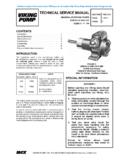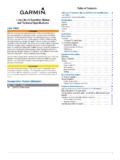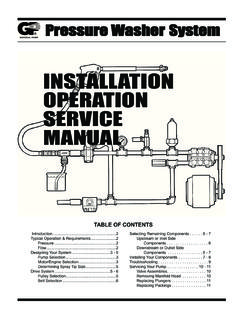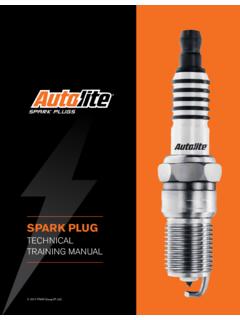Transcription of RMX™ Series Technical Service Manual - schems.com
1 Technical Service ManualRMX Series RMX 850 RMX 1450 RMX 2450*TD-000098-00*TD-000098-00 Rev. BRMX Series Technical Service Manual1 QSC Audio Products, services GroupPhone:1-800 QSC AUDIO (1-800-772-2834) USA only+1 (714) 957-7150 Fax:+1 (714) 754-6173 Postal:1665 MacArthur Mesa, California 92626 (product information and support) (parts and accessory sales)RMX 850 RMX 1450 RMX 2450 RMX SeriesTechnical Service ManualCopyright 2001, 2002 QSC Audio Products, Inc. All rights # TD-000098-00, Rev. B. Released February Audio Products, 850 RMX 1450 RMX 2450 OUTPUT POWER in wattsFTC: 20 Hz 20 kHz @ THD, both channels driven8 per channel1852604504 per channel280400650 EIA: 1 kHz @ THD, both channels driven8 per channel2002805004 per channel3004507501 kHz @ 1% THD, typical, both channels driven2 per channel4307001200 Bridge Mono.
2 8 , 20 Hz 20 kHz, THD53080013008 , 1 kHz, THD60090015004 , 1 kHz, 1% THD, typical83014002400 DYNAMIC HEADROOM2 dB @ 4 DISTORTIONSMPTE-IM< < < RESPONSE20 Hz 20 kHz, +0/-1 dB(at 10 dB below rated output power)-3 dB points: 5 Hz and 50 kHzDAMPING FACTOR> 300 @ 8 NOISE (unweighted 20 Hz to 20 kHz, below rated output)100 dB100 dB100 dBVOLTAGE (30 dB)40 (32 dB)50 (34 dB)INPUT SENSITIVITY, V RMSfull rated power @ 8 (+ dBu) (+ dBu) (+ dBu)INPUT IMPEDANCE10 K unbalanced20 K balancedCONTROLSF ront: AC switch, Ch.
3 1 and Ch. 2 gainRear: 10-position DIP switchINDICATORSPOWER:Green LEDCLIP:Red LED, 1 per channelSIGNAL:Yellow LED, 1 per channelCONNECTORSI nput:Active balanced; XLR and " ( mm) TRS, tip and pin 2 positive, and barrier stripOutput: Touch-Proof binding posts and Neutrik Speakon COOLINGC ontinuously variable speed fan, back-to-front air flowAMPLIFIER PROTECTIONFull short circuit, open circuit, thermal, ultrasonic, and RF protectionStable into reactive or mismatched loadsLOAD PROTECTIONTurn-on/turn-off muting, AC coupling, triac crowbar (on each channel)OUTPUT CIRCUIT TYPEABABHAB: Class AB complementary linear outputH.
4 Class AB complementary linear output with Class H 2-step high efficiency " ( cm) wide, " ( cm) tall (2 rack spaces) " (40 cm) deep (rack mounting to rear support ears)WEIGHTS hipping:41 lb. ( kg)46 lb. ( kg) lb. (23 kg)Net:35 lb. ( kg)40 lb. ( kg) lb. ( kg)POWER REQUIREMENTSA vailable for 120 or 220 240 VAC, 50/60 HzPOWER CONSUMPTION @ 120 VAC(both channels driven)Multiply currents by for 230V unitsUS patents pendingSPECIFICATIONS SUBJECT TO CHANGE WITHOUT * * * * *A32*A14 RMX Series Performance SpecificationsRMX Series Technical Service Manual3 Table of ContentsRMX Series Performance Specifications.
5 41. Introduction .. Service bulletins .. The well-equipped Service bench .. Working with surface-mount components .. Series description .. Technical descriptions and theory of operation .. 82. Component identification and pinout .. 103. Troubleshooting: Symptoms, causes, & remedies .. Excessive current draw .. Protection, muting, and turn-on/turn-off delay problems .. Faults with signal present .. Instability .. Power supply & rail balancing problems .. 144. RMX calibration procedures .. Setting bias.
6 Setting positive and negative current limits .. 155. Servicing RMX amplifiers .. Mechanical disassembly and re-assembly .. 166. Replacement parts .. RMX 850 Replacement Parts .. RMX 1450 Replacement Parts .. RMX 2450 Replacement Parts .. 237. Schematics and diagrams .. RMX Assembly/Disassembly Diagram 1 of 2 (All models) .. RMX Assembly/Disassembly Diagram 2 of 2 (All models) .. RMX 850 Schematic Diagram 1 of 3 Channel 1 .. RMX 850 Schematic Diagram 2 of 3 Channel 2 .. RMX 850 Schematic Diagram 3 of 3 Power Supply.
7 RMX 1450 Schematic Diagram 1 of 3 Channel 1 .. RMX 1450 Schematic Diagram 2 of 3 Channel 2 .. RMX 1450 Schematic Diagram 3 of 3 Power Supply .. RMX 2450 Schematic Diagram 1 of 3 Channel 1 .. RMX 2450 Schematic Diagram 2 of 3 Channel 2 .. RMX 2450 Schematic Diagram 3 of 3 Power Supply .. RMX 850 Chassis Wiring Diagram .. RMX 1450 Chassis Wiring Diagram .. RMX 2450 Chassis Wiring Diagram .. 404 QSC Audio Products, braid1. Service bulletinsContact QSC Technical services to make sure you have the most up-to-date Service bulletins for RMX Series amplifiers.
8 Service bulletinsmay be distributed in hard copy, via fax, and electronically (Adobe Acrobat PDF) via CD-ROMs, FTP from the QSC web site( ), and Service bulletins had been issued at the time this Manual was printed: RMX0001, Q205 Lead Stress (RMX 2450 only); RMX0002, RMX Turn-on Delay (all RMX models); RMX0003, RMX 2450 Turn-off Mute (RMX 2450); RMX0004, RMX 2450 AC Wire Routing (RMX 2450); RMX0005, RMX 2450 AC Wire Replacement (RMX 2450); and RMX0006, RMX 2450 IRFZ44N Field Effect Transistors (RMX 2450).
9 Working with surface-mount componentsRMX amplifiers, like many modern electronic products, use surface-mount technology (SMT) components where appropriate in order tomake high-density circuitry that is reliable and economical to components in the RMX amps are used in the small-signal and control circuits, so they do not handle significant amounts of power;therefore, they are subject to very little stress and should seldom fail. Sometimes they do fail, or they require replacement for a performanceupgrade or modification.
10 Thus, it is important to know how to work with SMT tools and equipment exist for soldering, unsoldering, and removing SMT components quickly andefficiently, but they are often expensive. Most SMT repairs, though, can be handled reasonably well with commontools and equipment, such as tweezers, solder braid, and fine-tip soldering irons. The original factory componentsare tacked to the board with a spot of glue, so you might have to apply some force to break the components (resistors, capacitors, diodes, etc.)




